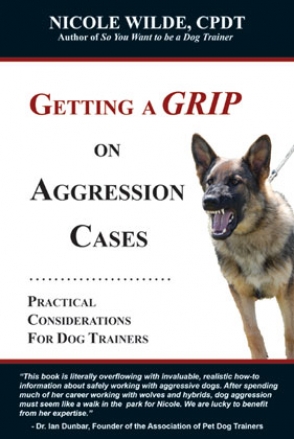Is your dog afraid of strangers? Would he rather hide than play with other dogs? Does he take cover at the sound of thunder, or cringe when you pick up a brush or nail clippers? Never fear!
Robo-Dog and the Docking Debate
A Canadian newspaper recently reported on a study carried out at the University of Victoria. Scientists were interesting in researching the behavioral effects of tail docking in dogs—both on the dogs whose tails were docked, and on the dogs who encountered them.
The men used a life-like robotic dog they deemed “robo-dog” (I can hardly wait for the movie) that resembled a black Lab. They brought robo-dog to off-leash dog parks to observe how other dogs would respond to it. In half the trials, robo-dog wore an artificial tail that was roughly the same length as an average Lab tail; in the other trials, the artificial tail was the length of a typical docked tail. In both cases, a motor powered the tail so it could be wagged and held in various positions.
When robo-dog wore the average-sized tail and wagged it in typical, life-is-good Lab style, other dogs approached confidently. When the average-sized tail was held stiffly and upright, other dogs approached less confidently, if at all. This, of course, mimics what would happen with a real dog. (I have to wonder, though, what those dogs thought when they moved in for a getting-to-know-you-sniff: “Hmm, never smelled motor lube back there before…”) In the encounters where robo-dog wore the docked tail, other dogs approached more warily, regardless of whether it was wagging in a friendly manner or held stiffly.
To anyone who understands canine body language and behavior, these results are not surprising. After all, dogs read each other’s body language constantly to discern intent, and the tail constitutes a large part of that display. The docked tail made it difficult for other dogs to read robo-dog’s intentions. The interesting part was what the scientists then postulated, which is that a dog's loss of ability to communicate clearly with other dogs could lead to that dog becoming cautious, remote, and even aggressive. “A dog that lacks the ability to express its intentions with its tail may have to resort to other methods, Leaver says, such as growling, lunging or even biting. Or a dog that is always treated as if it were something to beware of, Reimchen says, may become a dog to beware of.” This makes perfect sense. Imagine a person who was born with a physical condition that rendered them unable to smile or show any facial expression. Chances are, people would find that person very difficult to relate to, even if the person were able to speak. And that person would eventually feel like an outcast, very possibly resulting in a shift in their personality and the way they related to others.
Back when I taught group classes, every now and then I would get a student who went through the course with no smiles, and no facial expression whatsoever. Upon chatting with them later on I’d find that they had been enjoying the class, but it was still unnerving. Performers dread this type of audience member, as there’s no discernable feedback. It worries us when we can’t get a reading on another’s intentions, and it does the same to dogs.
Although the experiment’s findings might not have been all that surprising, they do make an important statement. Many breeders and owners routinely dock the tails of rotties, dobies and other breeds without a second thought. It’s accepted that docking, sometimes along with ear-cropping, is just “what you do” with those breeds. Many feel the dogs look more attractive that way. Docking became such an accepted practice over the years that, until recently, no one gave it a second thought. But what a strange thing to do! The only possible value of docking is cosmetic, and we’re talking about beloved family members here. Would we take a baby and perform unnecessary, painful surgery to amputate part of a limb because we felt it would be more attractive? Would we deliberately do something to young children that would render them less able to communicate clearly with others, causing all sorts of potential problems with the child’s emerging personality and in how others would deal with him/her in the future? Of course not. This article offers one more reason why, just as England and Australia have already done, tail docking, along with ear cropping, should be banned once and for all.










